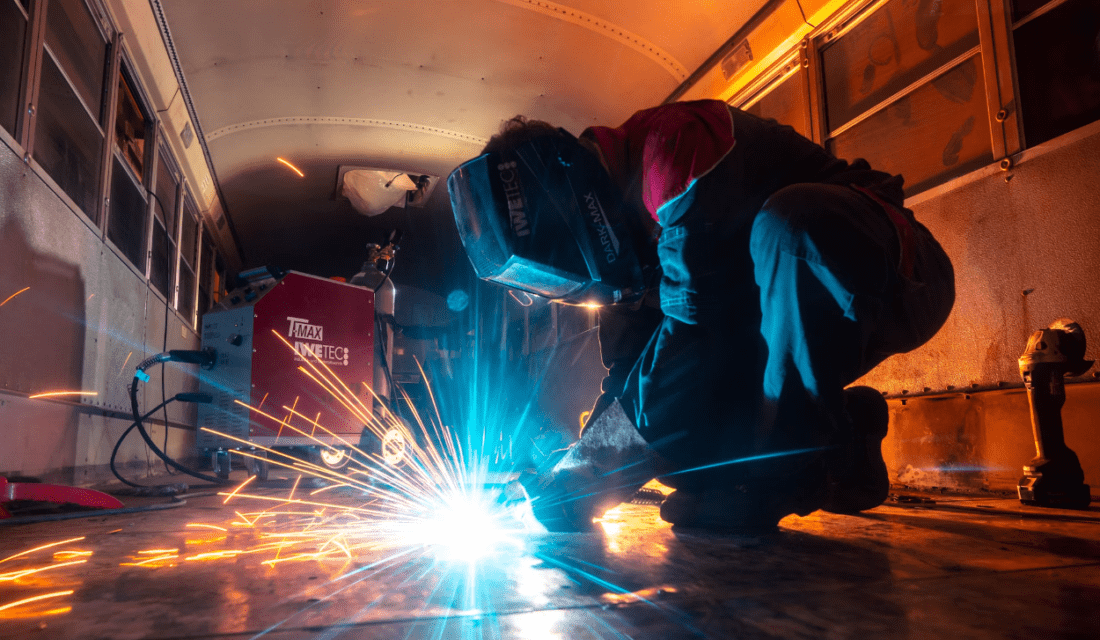Construction sites are dynamic environments where adaptability and resourcefulness are key. Traditional welding setups often rely on access to mains electricity, which can be a major limitation, especially during power outages.

A welder generator offers a powerful solution, combining a welding machine with a portable generator in a single unit. This eliminates dependence on external power sources and streamlines on-site welding operations, leading to increased efficiency and cost savings.
In this article, we will explore the specific benefits of using a welder generator for construction welding.
Unmatched Portability and Flexibility
The Indiana Oxygen Company notes that, unlike traditional welding machines that require a stationary power source, welder generators are self-contained units. They come equipped with wheels and are often compact, allowing for easy transportation around the job site. This flexibility is crucial for construction projects where welding needs might arise in different areas.
Grand View Research notes that modular construction methods, which often require on-site welding, are gaining popularity due to their efficiency and reduced waste. This trend highlights the need for portable welding solutions like welder generators.
Welders no longer need to wait for extension cords to be set up or struggle with limited reach. Whether it’s welding beams or repairing pipes, a welder generator provides the power and freedom to get the job done efficiently.
Reliable Power Source for Consistent Welding
Construction projects can face unpredictable situations, including power outages or unreliable grid connections. According to the American Society of Civil Engineers, climate change-induced adverse weather conditions are putting additional strain on the country’s power system. This causes unstable connections to the power grid.
A welder generator ensures a consistent and dependable power source for your welding needs. This eliminates delays and frustrations caused by power fluctuations that can lead to inconsistencies in the weld quality.
With a welder generator, you have complete control over the power supply, allowing for precise welds that meet project specifications. This reliability becomes even more critical for safety-sensitive welds in structural components or pressure vessels.
Increased Efficiency and Reduced Downtime
According to the U.S. Bureau of Labor Statistics, construction labor productivity in the United States grew at an average annual rate of 1.5% from 2019 to 2022. This highlights the ongoing focus on efficiency in the construction industry.
The portability and self-contained nature of welder generators also significantly improve workflow efficiency on construction sites. Setting up a welding station becomes a much faster process, eliminating the need to wait for electricians or struggle with tangled extension cords.
Additionally, welder generators often come with multiple outlets, allowing you to power other tools and equipment simultaneously. This reduces the need for separate generators and streamlines overall operations.
With less downtime spent on setting up and managing power sources, welders can focus on their core tasks. This leads to increased productivity and faster project completion times.
Cost-Effectiveness and Reduced Equipment Needs
While the initial investment in a welder generator might seem higher compared to a traditional welding machine, the long-term benefits outweigh the cost.
Moreover, Forbes highlights that permissions are needed in several places to install a generator, including homeowners associations and governments. Usually, permits cost anywhere between $50 and $200. Make sure to inquire about particular permission requirements and costs from your local government.
Welder generators eliminate the need to rent separate generators for power or pay for additional electrical infrastructure.
This translates to significant cost savings throughout multiple projects. Additionally, a welder generator replaces the need for a dedicated generator, reducing overall equipment needs and simplifying on-site logistics. This not only saves on rental fees but also frees up valuable space on the job site.
Powering Additional Tools and Equipment
The benefits of a welder generator extend beyond just welding. Most welder generators come equipped with multiple outlets that can be used to power various tools and equipment commonly found on construction sites. This could include grinders, power tools, lights for night work, or even additional welders.
Recently, The Fabricator featured one such new engine-driven welding generator that can provide up to 4,500 W of peak AC power at 120/240 V. Welder generators like this one are ideal for light fabrication, farm/ranch work, construction, service vehicles, and portable maintenance duties. This adaptable device ensures steady, smooth welding arcs and dependable arc beginnings for all varieties of DC stick electrodes.
Having a readily available power source eliminates the need for separate generators for these tools, simplifying power management and reducing reliance on external sources. This versatility makes welder generators a valuable all-in-one solution for construction projects, ensuring smooth operation and efficient use of resources.
FAQs
What makes a generator different from a welder generator?
A welder generator combines a welding machine with a generator, providing both welding capabilities and auxiliary power for tools. Regular generators only supply electrical power and lack the built-in welding functionality. Welder generators are designed for dual use, making them ideal for construction sites and remote locations.
Is a welder generator AC or DC?
Welder generators can produce either AC or DC output, depending on the model and settings. DC output is generally preferred for welding due to its stable arc and smoother performance with various electrodes. Some welder generators offer both AC and DC options, allowing versatility for different welding tasks.
What is the wattage of a welding machine?
The wattage of a welding machine varies depending on its type and capacity. For instance, the mentioned engine-driven welding generator delivers up to 4,500 W of peak AC power. In general, welding machines can range from around 2,000 W for small portable units to over 12,000 W for industrial models.
Finally, welder generators have emerged as a powerful solution for construction welding, combining portability, reliable power, and cost-effectiveness. Their versatility extends beyond welding, providing power for various tools and equipment.
This all-in-one approach translates to streamlined operations, increased efficiency, and reduced downtime on construction sites. As construction methods evolve and adaptability becomes even more crucial, welder generators are poised to become an indispensable asset for construction professionals.



